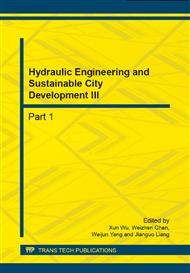p.881
p.887
p.892
p.896
p.901
p.906
p.910
p.916
p.923
Struggle for Survival: The Status Quo for Shanghai’s Bus Lane System
Abstract:
This paper provides the opportunity to present the performance evaluation results of Shanghai’s bus lane system in 2012. The evaluation results show that development of Shanghai’s bus lane system has fallen into a dilemma. The effectiveness of bus lanes was presenting a descending tendency. The average travel speed of bus lanes was only 14.6km/h, which was lower than the baseline of Shanghai’s transit metropolis construction targets. “Empty lane syndrome” existed in three newly implemented bus lanes. After 2010 Shanghai Expo, no new bus lane was built and the construction of bus lane came to a standstill. Lax enforcement resulted in high violation rates, which significantly reduced bus speed. Due to the increasing congestion in general purpose lanes and underutilization of bus lanes, attitudinal survey results revealed a negative public sentiment towards bus lanes. The grim situation urges a transition to sustainable development of bus lanes, namely, back to way to seek for efficiency and quality instead of blindly expansion.
Info:
Periodical:
Pages:
901-905
Citation:
Online since:
September 2014
Authors:
Price:
Сopyright:
© 2014 Trans Tech Publications Ltd. All Rights Reserved
Share:
Citation:


